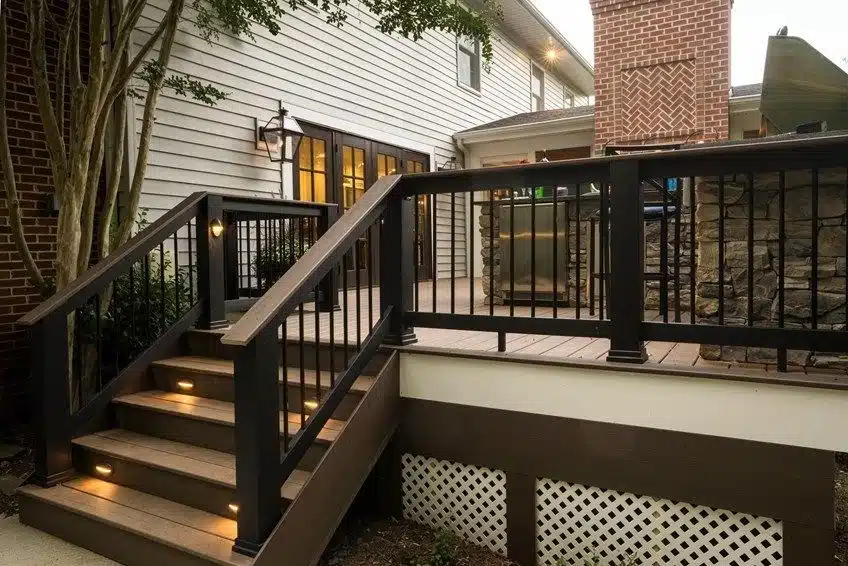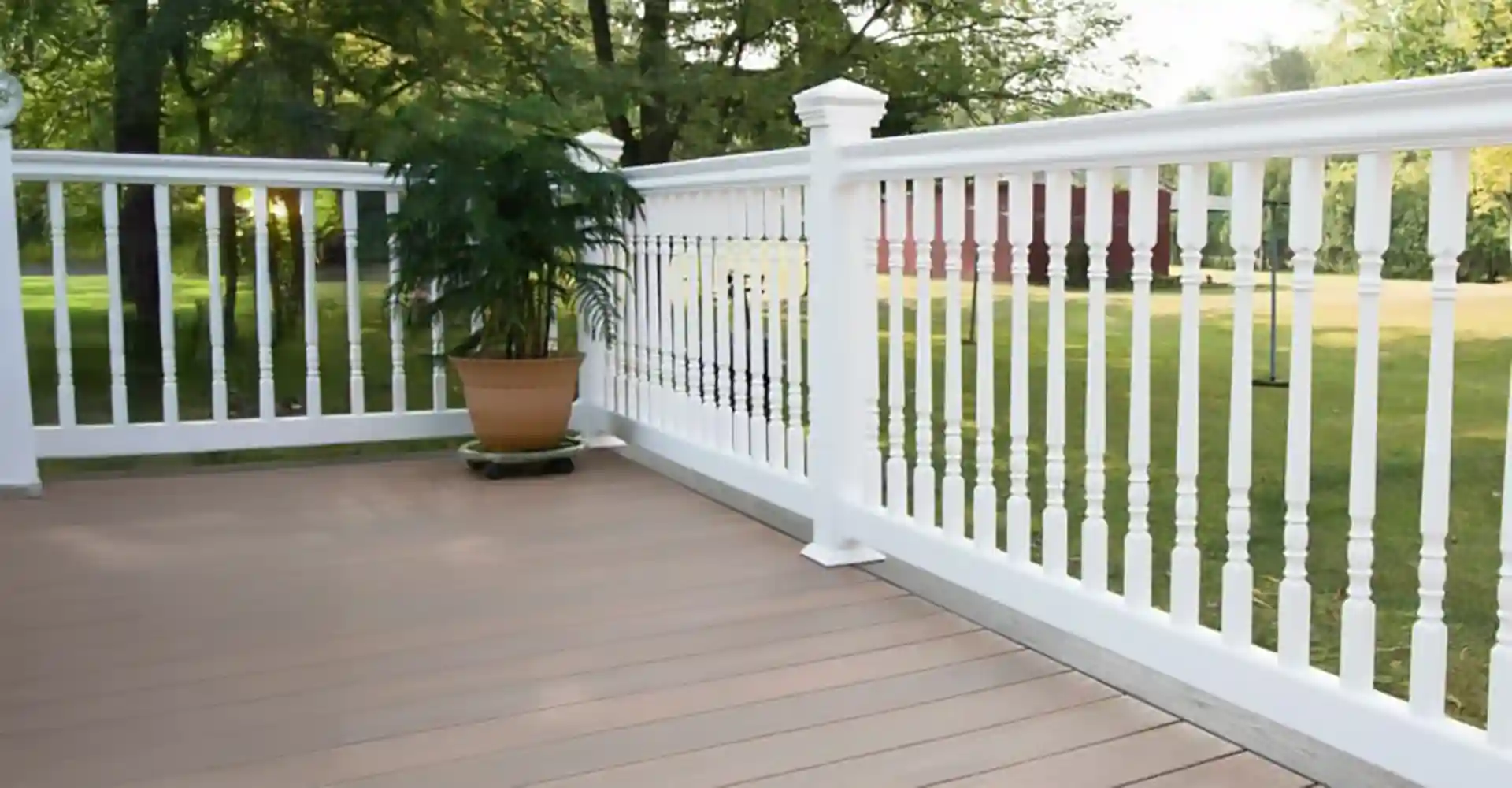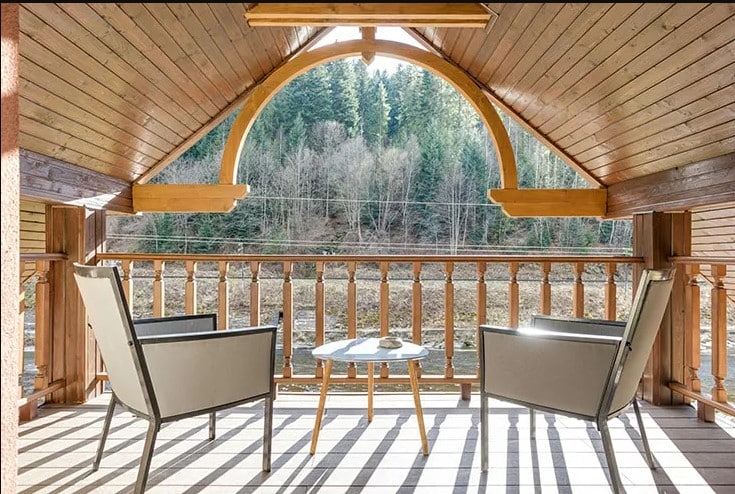It’s amazing how such a small detail can make a big difference. Overlooking proper railing height can lead to serious issues—from failing home inspections to creating a safety hazard that increases the risk of falls and liability. In this article, I share practical insights and solutions for addressing low railings, ensuring your deck is safe and inviting.
Throughout my years in home improvement, I’ve seen countless homeowners face unexpected problems because their deck railings didn’t meet local building codes. Whether you’re planning a new deck or wondering if your existing railing is up to par, understanding these risks is essential. In this article, I’ll walk you through what happens when your deck railing falls short (literally), the legal requirements you need to know, and practical solutions to bring your deck up to code.
Understanding Deck Railing Height Requirements
Deck railing height requirements exist to protect everyone who uses your outdoor space. These standards aren’t arbitrary – they’ve been developed through years of safety research and real-world accident data. Let’s explore what these requirements are and why they matter.
Building Codes and Standards for Deck Railings

The International Residential Code (IRC) requires residential deck railings to be at least 36 inches high when measured vertically from the deck surface. Commercial properties face stricter regulations with a minimum height of 42 inches. Local building codes often adopt these standards but may add specific modifications based on regional needs.
Some jurisdictions have additional requirements for:
- Railing spacing (typically less than 4 inches between balusters)
- Structural load capacity (usually 200 pounds of force in any direction
- Material specifications based on climate conditions
- Height variations based on deck elevation
Check with your local building department before starting any deck construction or modification project.
The Importance of Proper Railing Height
Proper deck railing height creates a critical safety barrier that prevents dangerous falls. A railing that’s even a few inches too low dramatically increases the risk of someone toppling over, especially children who might climb or lean against it.
The deck railing height directly affects:
- Fall prevention (particularly for children and older people)
- Property liability exposure
- Home resale value and marketability
- Insurance coverage and premiums
- Peace of mind during gatherings
I’ve seen many beautiful decks rendered unsafe by railings built just a few inches too low. The difference between a 30-inch and 36-inch railing might seem minor, but those extra inches protect against accidental falls and potential injuries.
Safety Risks of Low Deck Railings
Low deck railings create dangerous conditions for everyone using your outdoor space. The insufficient height compromises protection and dramatically increases accident potential.
Fall Hazards and Injury Potential
The International Residential Code (IRC) requires deck railings to be at least 36 inches high for decks more than 30 inches off the ground. Railings below this height fail to provide adequate protection against falls. Low railings create serious risks for children, older adults, and pets who might lean over or slip accidentally.
The danger comes from railings below an average adult’s hip level—a critical safety threshold. When a railing is too short, it can’t effectively stop someone’s momentum if they trip or stumble near the edge of the deck. Falls from elevated decks often result in severe injuries, including broken bones, head trauma, and even fatal outcomes.
Liability for Homeowners
If someone gets injured because your deck railing height doesn’t meet code requirements, you’re potentially liable for their medical expenses and suffering. Homeowners insurance may deny claims related to non-compliant deck features, leaving you financially exposed.
Beyond immediate liability, maintaining improper deck railing height can impact your property value. Home inspectors flag these safety violations during pre-sale inspections, leading to failed reports or requiring expensive corrections before closing. Prospective buyers often walk away from properties with obvious safety hazards, seeing them as indicators of broader maintenance neglect.
The risk extends beyond visitors—inadequate railings compromise your family’s safety daily.
Legal Consequences of Non-Compliant Deck Railings

Low deck railings create serious legal issues for homeowners beyond safety concerns. These non-compliant structures can trigger problems with authorities and insurance companies, potentially leading to significant financial penalties.
Code Violations and Fines
Deck railings below the 36-inch IRC minimum constitute code violations. Local inspectors issue correction notices with strict deadlines. Fines vary by jurisdiction, but liability risks are well documented. Municipalities often implement escalating penalties, doubling or tripling initial amounts. Severity increases if low railings contribute to accidents, potentially causing insurance issues and criminal negligence charges in extreme cases.
Measuring Your Deck Railing Height
Checking your railing height reveals if your structure meets safety standards and complies with codes.
Tools and Techniques for Accurate Measurement
You’ll need:
- Tape measure (4+ feet)
- Level
- Notepad and pencil
For accurate measurement:
- Place tape on the deck surface
- Extend to the top edge of the railing
- Ensure the tape is vertical using a level
- Record measurement
Take measurements at multiple points, especially where deck height varies. Most U.S. jurisdictions require 36 inches from surface to railing top.
Common Height Deficiencies
Many older decks have insufficient railings:
- Pre-code update railings (30-32 inches)
- DIY installations lacking code knowledge
- Settled/warped railings
- Decorative railings prioritizing aesthetics
Railings under 36 inches fail to provide adequate protection. Even 2-3 inch deficiencies significantly reduce safety. Low railings can act more as tipping points than barriers during stumbles. Solutions for Low Deck Railings
Addressing low deck railings doesn’t always require a complete rebuild. Solutions range from DIY fixes to professional renovations that bring railings up to code and improve safety.
DIY Railing Height Extensions
Adding height to existing railings is often cost-effective. Wood post and baluster extensions cost around $100-$200, varying by region and material quality. Metal extension kits typically cost $25-$40 per linear foot, fluctuating based on location and project requirements.
For wooden railings, you can:
- Attach additional top rails above existing ones.
- Install post extensions using bolts and metal brackets.
- Add decorative post caps that increase height while enhancing appearance.
PVC sleeve extensions work well for vinyl railings. They slide over existing posts to add 6-12 inches while maintaining a cohesive look.
Professional Railing Replacement Options
Professional replacement ensures proper installation and code compliance when DIY fixes aren’t practical. Complete replacement typically costs $70-$100 per linear foot, including materials and labor.
Professional options include:
- Cable railing systems: $75-$220 per linear foot
- Glass panel railings: $150-$300 per linear foot
- Aluminum railings: $60-$150 per linear foot
- Composite railings: $60-$110 per linear foot
Most contractors complete standard railing replacements in 1-3 days. Many offer free consultations to evaluate your current height and recommend solutions that match your home’s aesthetic while meeting safety requirements.
Impact on Property Value and Home Sales
Deck railings below height requirements significantly impact home value and marketability, creating safety issues and financial consequences when selling.
Home Inspection Concerns
Home inspectors flag deck railings below the 36-inch minimum height prominently in reports, creating red flags for buyers and lenders. Mortgage companies often require corrections before finalizing loans. Sales can be delayed for weeks while homeowners bring non-compliant railings up to code, adding unexpected costs and stress during the selling process.
Buyer Perceptions of Safety Issues
Buyers view low railings as more than code violations—they see family dangers. Properties with safety hazards typically receive lower offers or languish on the market. Many buyers calculate repair costs and deduct that amount plus a premium from their offers. Some buyers walk away entirely, especially families with young children or elderly relatives at greater risk. This perception problem often costs sellers far more than the actual repair would have.
Conclusion
Low deck railings aren’t just about rules—they’re about protecting loved ones and yourself from liability. A few inches can make the difference between safety and serious risk.
Acting now avoids costly future repairs and prevents potential accidents. Whether choosing DIY fixes or hiring professionals, the investment provides peace of mind and preserves home value.
Proper railings make outdoor spaces beautiful and secure. Don’t wait for a home inspection or accident to address this safety feature. Your deck should be for relaxation and enjoyment, so do not worry.

